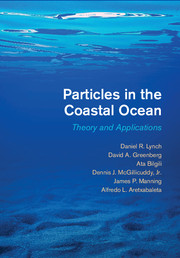Book contents
- Frontmatter
- Dedication
- Contents
- About the Authors
- Preface
- Acknowledgments
- List of Acronyms
- Definitions and Notation
- Introduction and Scope
- Part I Background
- Part II Elements
- Part III Applications
- Part IV Appendices
- A Series, Sums, Limits
- B Complex Numbers
- C Wiener Integrals
- D Rates and Rate Limiters
- E Diffusion Solutions
- F Covariance Matrix for Shear and Convergence
- G Summary – ARn Recursions
- H Distribution Properties for Linear Triangles
- Bibliography
- Index
- Plate Section
Preface
Published online by Cambridge University Press: 05 January 2015
- Frontmatter
- Dedication
- Contents
- About the Authors
- Preface
- Acknowledgments
- List of Acronyms
- Definitions and Notation
- Introduction and Scope
- Part I Background
- Part II Elements
- Part III Applications
- Part IV Appendices
- A Series, Sums, Limits
- B Complex Numbers
- C Wiener Integrals
- D Rates and Rate Limiters
- E Diffusion Solutions
- F Covariance Matrix for Shear and Convergence
- G Summary – ARn Recursions
- H Distribution Properties for Linear Triangles
- Bibliography
- Index
- Plate Section
Summary
This is a book about the coastal ocean; specifically, about simulating particle motion within it. It unifies essential ideas, for a multidisciplinary group of scientific professionals.
We take as given realistic computer fields for the primary variables: velocity, pressure, temperature, salinity, and turbulence. These fields are becoming available for wide use, in site-specific realizations that account for detailed forcing and topography. Emerging are some biogeochemical fields in some cases: nutrients, light, plankton. This is our virtual environment. Though imperfect, it has reached a high level of realism, and it is continuously improving.
Our subject is the transport, evolution, and fate of particles in these environments. For simple particles, physical motion is of fundamental concern. For chemically active particles, one adds reaction, transformations, and interaction with bounding surfaces. For living particles, one adds suspension, growth, death, transformation, behavior, and reproduction. Nonlinear physical-biological interaction is implied and natural.
The material is culled from 20 years of research projects. A diverse collection of ideas has emerged, variously titled Lagrangian, ensemble, kinetic, Monte Carlo, site-specific, or individual-based methods. They share the common theme of simulating many small units (particles) individually, allowing variability to develop among them without prior aggregation. Current computing power makes broad operational use possible.
To date there is no single source that unifies these ideas for the audiences intended. Our book fills that gap. Included are basic ideas about applied probability; random walk; interpolating and navigating general computational meshes and data products; and Monte Carlo simulation methods. Applications include drifters, sediment motion, oil spills, and larval ecology.
Overall, our intention is to facilitate the analysis of coastal ocean phenomena using simulation of particle dynamics. The notion of trajectory is general – the physical and biochemical history experienced by an individual particle in motion. The work is configured as a teaching and reference source, suitable for year-4 and beyond university students and for working professionals.
- Type
- Chapter
- Information
- Particles in the Coastal OceanTheory and Applications, pp. xix - xxPublisher: Cambridge University PressPrint publication year: 2014



